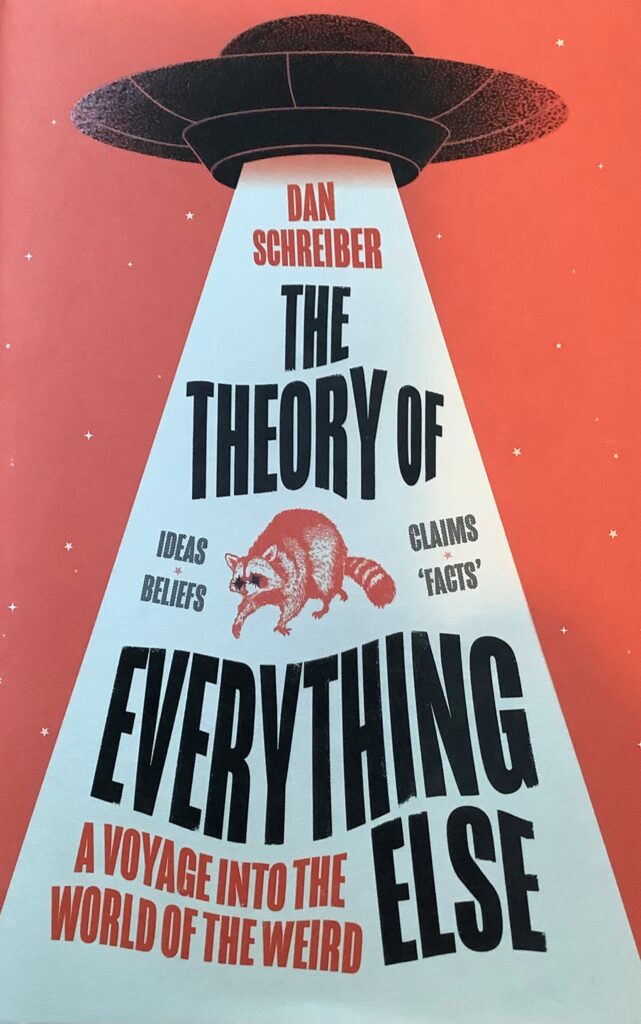
London: HarperCollins, 2022. 356 pp. ISBN: 978-0-00-851897-4 £16.99
(This review originally appeared in De Numine: The Journal and Newsletter of the Alister Hardy Trust, No 74, Spring 2023, pp. 36 – 7).
Sir Alister Hardy was refreshingly ‘different.’ A look at his life story reveals this at every turn. Take his interest in telepathy, for example; one originally fuelled by a Mrs Wedgewood’s apparently paranormal knowledge of what he’d been doing on the day he went to see her (‘Oh what have you been doing?’ Mrs Wedgwood is said to have exclaimed. ‘I see a large pink square in front of you…’ Incredibly, and apparently completely unbeknownst to Mrs Wedgewood, Hardy had been painting white cardboard with vivid pink distemper that very morning as part of an experiment in hiding ships from the enemy during the first world war). In 1950 he would declare to the Bodley Club at Merton College Oxford (during a talk about monsters) that nothing would please him more than somebody finding something in Loch Ness. Later still, his interest in ESP was to find full expression in actual psychical experimentation, with his experiments at Caxton Hall in 1967 still ranking as among the best in the history of the field. ‘Different’, then, at various points; and different again in positing that our capacity for religious experiences is one that has actually aided our evolution.
An experiment on a somewhat related note, and one that I’m sure would have pleased Hardy (maybe it did) was one that took place in late January 1971 (alas, the exact date has been lost to time): one which must rank as amongst the oddest on record. On two separate dates during this period whilst travelling to and from the moon astronaut Edgar Mitchell concentrated on a symbol and a random number whilst back on earth two of his friends (coincidentally also called Ed) attempted to visualise what he was trying to telepathically send them. Upon his return to earth, Mitchell and his co-experimenters compared notes and found they’d achieved a ‘hit’ rate of under 10%. This percentage sounds disappointingly low although Mitchell concluded that it was ‘statistically significant’ (and this despite the fact that, thanks to a launch delay, his friends had been attempting to ‘receive’ his psychical transmissions 45 minutes before he sent them).
If the sheer oddity, the sheer difference, of this episode appeals to you then you’ll love Dan Schreiber’s The Theory of Everything Else because it’s absolutely chock full of them (including, in chapter twenty-five, a discussion of the success or otherwise of the three Eds’ cislunar space ESP experiment). Did you know, for example, that the inventor of PCR tests, Kary Mullis, claimed once to have encountered a talking, glowing raccoon one night whilst walking the few feet to the outhouse of his countryside Californian cabin? Or that the allegedly reincarnated Tibetan abbot Tuesday Lobsang Rampa, much talked about and admired in the 1960s and 70s as medicine man, mystic and guru, was actually a plumber from Plympton, Devon, named Cyril Henry Hoskin? Or that – as a result of an experiment in alternate history – it has been calculated that it would have taken 5,682,646 curious time travellers to have travelled to (and hence sunk under their own combined weight) the ill-fated Titanic? Or that Ringo Starr’s grandmother, dubbed the ‘voodoo queen of Liverpool’, once tried to exorcise her grandson because he was left-handed? Or that there’s a surgeon in Japan who carries out operations to alter the palm lines of – presumably private – patients so that they can receive more upbeat readings from palmists? Stick a pin in Dan Schreiber’s entertaining miscellany of the weird and the wonderful and you’re bound to connect with something like this. Across every fact-packed chapter – actually, he prefers ‘fact’ to fact – he’s like a kid let loose in a Fortean sweetshop. His book is subtitled ‘A Voyage into the World of the Weird’ and it’s apt because that’s exactly what it is.
A brave voyager, then, Schreiber. A different one too. Yet there’s no real depth to the sea that he sails, nor any really sustained attempt to go under the surface to tease out what such oddities and eccentricities might be telling us about the nature of the ocean itself. Indeed, the nearest he gets to this is the observation that ‘[p]eople are strange’, together with the reminder that we’re all ‘a multitude of realities.’ There’s no discussion of how any of what he reveals might be disclosing levels of reality occluded by the mundane and the everyday, nor any attempt to force any kind of paradigm shift on skeptical readers. Instead he just lets everything drift out there: a flotsam and jetsam of weirdness released by a cheerfully bemused author to bob along on an engaging and immensely readable tide over 356 (occasionally illustrated) pages.
The dustjacket reveals that the London-based Schreiber ‘has no idea what he believes anymore.’ Perhaps this is because of his own paradigm shift or because exposure to too much weirdness can do this to a writer. Regardless, his book is never less than thought-provoking and left me wanting to know more at pretty much every point. Which brings me to the one real weakness here (aside from rather too many typos). Above a somewhat thin bibliography there’s a website address for those in search of more information but no actually printed references. Whilst the paper-saving is to be admired the fact that my interest was piqued so often made me keenly aware of the lack of any notes and references to rifle through – a shortcoming that left me feeling high and dry when what I really wanted to do was to sail on and on.